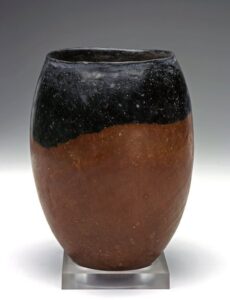Symbolism In Color: Red (resource)
Red is special. Shades of vermilion, crimson, and scarlet color our strongest emotions, warn of imminent danger, and glorify our supreme leaders. For many, red is divine, a direct connection to gods and the essence of life. Since ancient times we have used the best red substances to express ourselves and influence our world. Explore the symbolism of red in our artwork, revealing hidden relationships with nature, technology, history, and culture.
Is Red Our Most Important Color?
What does red mean to you?
What do you think red means in the artworks below?
Supernatural
Humans see red particularly well. It stands out to us more than any other color. This phenomenon may explain why many ancient cultures believed that red was supernatural. That perceived energy and sacredness made red the perfect color to animate depictions of gods and supernatural beings. The eyes, beard, and hair of this ancient sculpture still retain their original red ochre paint.

Love
Red is the color of love. Like Boucher’s blushing Venus, strong emotion, physical exertion, and sexual excitement cause our skin to become redder due to extra blood flow. Our symbols for love are invariably colored red as well: the romance of roses, the fiery torch of passion, and hearts for Valentine’s Day.
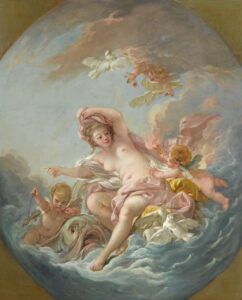
Danger
Red is the color of power and danger in the natural world. Our earliest ancestors experienced the light and warmth of the sun, the burning heat of fire, and sometimes the glow of molten lava. Poisonous animals and plants are often red as well. We have learned to treat red things with caution, and we choose red to color our warning signs, such as “Stop,” “Danger,” “Poison,” and “High Voltage.”
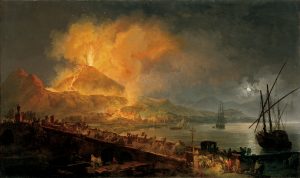
War
Red has long been associated with the blood of war. Ares, the violent and destructive Greek god of war, is described as “blood-stained.” His Roman counterpart, Mars, also associated with red, represented military force that was necessary to secure peace. Here, Joan of Arc is portrayed as a Mars-like valorous warrior surrounded by red, which also foreshadows the blood of her Christian martyrdom.

Power and Authority
Red is the color of power and authority in many cultures. In 1454 the Catholic Church designated red as the color of cardinals, the “princes of the church.” By 1588 cochineal was used to dye cardinals’ cassocks and hats. Officially red was claimed as the symbol of Jesus Christ’s blood and sacrifice, but red was the color of leadership long before Christianity, including the elite in ancient Egypt, ancient China, and ancient Rome.
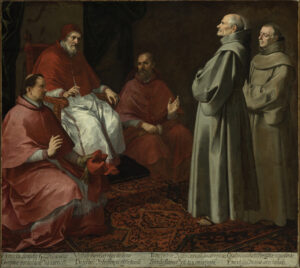
Life and Death
Cinnabar paint has been applied over the gold of this mask. Since ancient times we have associated red pigments with blood, integral to both life and mortality. Many cultures have incorporated red pigments into burials, sprinkling it through a grave or painting the deceased’s body with it. The Aztecs (circa 1300–1521) often imparted soul-force to a new artwork by bathing it in red pigment, ritually simulating the blood of childbirth.
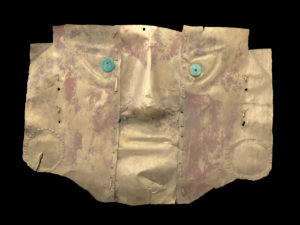
Blood
Blood is vital to life and sometimes all too apparent in death. Our visceral reaction to the sight of blood, or in this case raw meat, illustrates our deep relationship with red. The life-giving importance of blood is possibly the oldest explanation for humanity’s fascination with red dyes and pigments.
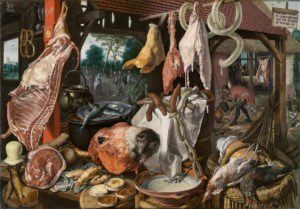
Evil
The Nile silt body of this jar is covered with a red ochre slip. For ancient Egyptians red symbolized the desert, fire, blood, and dangerous forces. It also represented life and regeneration, a necessary creative force to balance violent chaos to make an orderly world. The Egyptian word for red, desher, is the root word in the language for “desert,” “furious,” and “wrath.” To do “red things” was to do evil things. Red ink was often used to write the word evil, names of hostile monsters, and gods.
